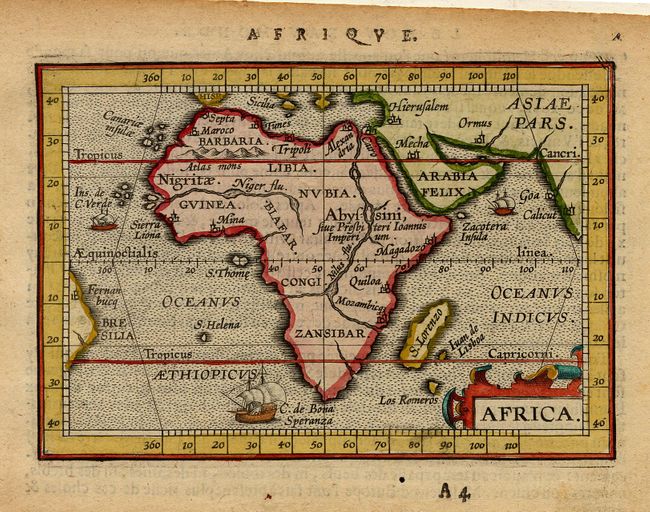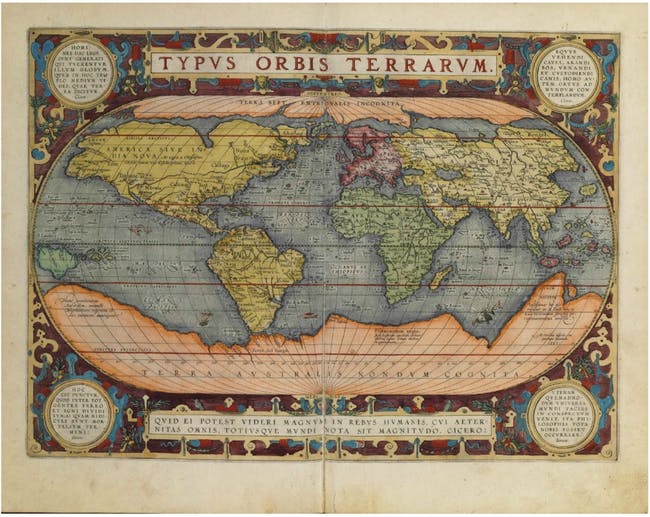

- ORTELIUS WORLD MAP TYPUS ORBIS TERRARUM 1570 FULL
- ORTELIUS WORLD MAP TYPUS ORBIS TERRARUM 1570 CRACK
Alfred Wegener played a major role in the later research work on the topic around 1912. This hypothesis was proven correct several centuries later. In the expanded form of the work, Ortelius writes about the possibility of continental drift. An important milestone for Ortelius himself, but also for the research work in ancient geography was the masterpiece Synonymia geographica, published in 1578. In the following years, he also published a map of Egypt, a plan of the Brittenburg castle on the coast of the Netherlands, and maps of Asia and Spain. Ortelius‘ famous first map, Typus Orbis Terrarum was published in 1564 and depicted a large wall map of the world.


The two men traveled to Trier, Lorraine, and Poitiers and Ortelius was highly influenced by Mercator and motivated to become a scientific geographer.Ībraham Ortelius (1527-1598), by Peter Paul Rubens, 1633 Ortelius’ Famous Map He traded books, pints, maps, and even visited the book fair in Frankfurt and a print fair where he met the German cartographer, philosopher and mathematician Gerardus Mercator.

However, Ortelius also started a career as a map engraver and entered the Antwerp Guild of Saint Luke as an illuminator of maps in 1547. During his life, Ortelius spent much time traveling through Europe and it is known that he spent much time in France, eastern Germany and Italy. In 1575, he was appointed geographer to the king of Spain on the recommendation of Arias Montanus, who vouched for his orthodoxy. Abraham Ortelius – Early YearsĪbraham Ortelius was born in Antwerp, but grew up with his uncle after his father passed away at young age. It consisted of a collection of uniform map sheets and sustaining text bound to form a book for which copper printing plates were specifically engraved. On May 20, 1570, Belgian cartographer and geographer Abraham Ortelius published the first modern atlas, the Theatrum Orbis Terrarum, in Antwerp. Over thirty editions of this Epitome were published in different languages.Ortelius World Map – Typus Orbis Terrarum, 1570 In 1577, engraver Philip Galle and poet-translator Pieter Heyns published the first pocket-sized edition of the Theatrum, the Epitome. The number of map sheets grew from 53 in 1570 to 167 in 1612 in the last edition. Editions were published in Dutch, German, French, Spanish, English, and Italian. Some 24 editions appeared during Ortelius's lifetime and another ten after his death in 1598. Nothing was like it until Mercator's atlas appeared twenty-five years later. The importance of the Theatrum Orbis Terrarum for geographical knowledge in the last quarter of the sixteenth century is difficult to overemphasize. The Parergon can be called a truly original work of Ortelius, who drew the maps based on his research. Later editions included Additamenta (additions), resulting in Ortelius' historical atlas, the Parergon, mostly bound together with the atlas. This first edition contained seventy maps on fifty-three sheets. It was one of the most expensive books ever published. He completed the atlas in 1569, and in May of 1570, the Theatrum was available for sale.
ORTELIUS WORLD MAP TYPUS ORBIS TERRARUM 1570 FULL
In 1568 the production of individual maps for his atlas Theatrum Orbis Terrarum was already in full swing. In 1565 he published a map of Egypt and a map of the Holy Land, a large map of Asia followed. The inspiration for this map may well have been Gastaldi's large world map. In 1564 he published his first map, a large and ambitious world wall map. In addition, he travelled a lot and visited Italy and France, made contacts everywhere with scholars and editors, and maintained extensive correspondence with them. Luke as an "illuminator of maps." Besides colouring maps, Ortelius was a dealer in antiques, coins, maps, and books, with the book and map trade gradually becoming his primary occupation.īusiness went well because his means permitted him to start an extensive collection of medals, coins, antiques, and a library of many volumes. He learned Latin and studied Greek and mathematics.Ībraham and his sisters Anne and Elizabeth took up map colouring. The maker of the 'first atlas', the Theatrum Orbis Terrarum (1570), was born on 4 April 1527 into an old Antwerp family. There is also a prudent comment adjacent to New Guinea querying whether this large island is part of the southern continent or not. South America retains the unusual bulged south-west coast drawn by Mercator. From surviving correspondence it is known that Mercator generously encouraged Ortelius to make use of his published corpus of research he also provided him with co-ordinates of places in America and perhaps elsewhere.
ORTELIUS WORLD MAP TYPUS ORBIS TERRARUM 1570 CRACK
Early issue of Ortelius' world map (before the crack of c.1576), based on Mercator's large world map of 1569.


 0 kommentar(er)
0 kommentar(er)
